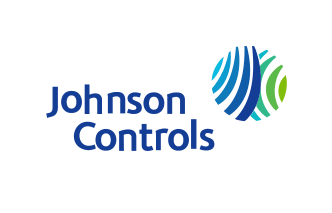COVID-19 & Construction: Effective Communication Tips for Off-Site Workers

It seems hard to believe given the past few weeks’ historic jobless claims, but just months ago one of the construction industry’s biggest problems was a lack of skilled workers. In fact, according to a 2020 Construction Hiring and Business Outlook Survey released in December of 2019, 81 percent of construction firms reported they were having trouble filling hourly and salaried craft positions, and 72 percent said they were concerned about worker shortages.
“Many construction executives are troubled by labor shortages and the impacts those shortages are having on operations, training and safety programs, and bottom lines,” Stephen E. Sandherr, Chief Executive Officer of the Associated General Contractors of America (AGC), said at the time.
That was before COVID-19.
Now, despite pleas from industry leaders for the US government to deem construction an essential service and apply other financial relief measures, the outlook for both contractors and America’s more than 7.5 million construction workers has deteriorated rapidly. A new AGC survey shows that the COVID-19 crisis has triggered layoffs at more than one in four firms.
“The pandemic is prompting a collapse in demand for commercial construction, putting tens of thousands of jobs at risk,” Sandherr said last week. “Congress and the administration must do more to make sure that efforts to flatten the curve don’t flat-line this industry and its millions of jobs.”
Which begs this question: While much has been written about best practices in jobsite communications, what are contractors doing to reach out to workers who are out of jobs? Whether their unemployment is due to pandemic-related work slowdowns, workplace injuries, seasonality, or family leave, effectively communicating with off-site crews is an imperative factor in keeping these team members safe and the construction industry healthy for the long haul. Read on to learn why, and gather tips from an industry expert on how to make sure no worker is “left behind.”
Off-site worker outreach: Good for mental health and business health
There are two equally important reasons to keep the lines of communication open with off-site workers, says Michelle Walker, VP Finance and Administration at SSC Underground and Chairman of the Construction Industry Alliance for Suicide Prevention (CFMA): It’s essential to both maintaining these individuals’ mental health and to protecting a firm’s business continuity.
The construction industry is already haunted by a worker suicide rate that is four times the national average. Throw being unemployed into the mix, and you risk heightened triggers for mental health issues.
“When you think about someone who might be wanting to take their own life, there are probably some broken relationships there,” Michelle says. “The individuals they work with every day may be the only people they are interacting with regularly enough to recognize the warning signs. When you take people out of that environment and away from a team of people who know them, that’s an issue.”
Continued communications with off-site workers is key in combating the isolation, anxiety, and loss of self-worth that often comes with joblessness.
“When you look at this demographic of construction workers, they’re so proud of what they physically do every day, of what they build, create, and achieve,” Michelle says. “They tie their self-worth into what they do on a daily basis at work. When you take that away, they can become hopeless really quickly.”
For contractors, keeping off-site workers up to date is essential to maintaining workplace productivity and being able to bring workers back into the fold quickly when the environment calls for it.
“If you’re interacting and training your current active workforce, and then you carve out this pool that’s not receiving communications, that second group is going to be steps behind when you try to reintegrate them,” Michelle says. “In the end their reintegration may not be as successful because they’re not on the same page as everybody else.”
The dos and don’ts of communicating with off-site workers
When it comes to effectively reaching out to off-site construction workers, the secret lies in segmenting your audiences, personalizing your message, and keeping communications clear and consistent. Your communications plan doesn’t have to be overly complicated or months in the making. Here are some dos and don’ts to get you started:
DO...
Segment your audience
Furloughs, workplace injuries, lag time between jobs — it’s likely that your off-site team members are at home for different reasons. Separating these groups into distinct categories will help you send them information that’s personalized to their needs.
Stick to the (personalized) point
In today’s digital world, people are barraged with data on a daily basis, and jobless workers are particularly susceptible to info overload. Craft communications that are comprehensive yet concise, and personalize your missives to address particular pain points. If you’re delivering written information via a channel like email, be particularly cognizant of how the worker might interpret it without the benefit of a live messenger.
“Ask yourself, ‘If I wasn’t working, how would I interpret this?’” Michelle says.
Offer a central point of contact
Make sure you’re presenting the off-site worker with a specific contact (or contacts) who can help them address the exact reasons they’re at home. For example, individuals dealing with worker’s comp issues will have distinctly different needs than those who are in between jobs, and at many firms these are addressed by separate managers.
“If somebody is off work for a work-related injury, I’m the singular point of contact on the status of their injury and their return-to-work date,” Michelle says. “I’ll also ask their supervisor to give them a call to see how they’re doing, but tell that manager to steer away from discussing their injury or when they’re coming back to work.”
Avoid “one and done”
Many companies start off their communications strong, only to peter out as weeks go by. At a minimum, Michelle recommends weekly communications with off-site employees. A good mix? Offer one business-style message (like an email) each week, combined with one personal contact (think phone or text) from a supervisor.
“That fits the reality of what’s manageable,” Michelle says, “and you’re showing them some regularity of outreach.”
Get your EAP involved
In many cases, Michelle says, furloughed workers still have access to an Employee Assistance Program (EAP). Make sure off-site workers are aware of this resource and encourage them to use it.
Encourage continued learning
Taking part in professional development opportunities while off the job is another way workers can stay engaged and productive.
“A great channel for maintaining connection and feeling purposeful is to use time away for safety training,” Michelle says. “A lot of this can be done online. And the employer can partner with the worker and say, ‘We can’t pay you for your time to do this, but we’ll pay for the course.’”
DON’T...
Make false promises
Don’t guarantee something that may or may not happen.
“Some personalities aren’t comfortable saying, ‘I don’t know,’” Michelle says. “They want to have an answer.”
But honest and open communications go a long way toward building worker trust. To avoid confusion, establish specific points of contact (see the “Dos” section) who are trained to address uncomfortable issues.
Keep on-site workers in the dark
Members of your crew who are still working may need a little coaching when it comes to reaching out to their off-site coworkers. Your best bet? During jobsite meetings, encourage team members to continue their social relationships with those at home, but advise them to funnel specific work-related questions to management.
“Engage your existing workforce to be a positive participant in this,” Michelle says, “And not individuals creating negative aspects of communication.”
Top communications channels for off-site workers
| Channel | Good for... | Suggested frequency | | ---------- | ---------- | ---------- | | Email | Business updates, links to resources and FAQs, and information on specific policies or contacts | Once a week (in combination with one form of personal outreach) | | Text | Quick personal check-ins, i.e. “Hope you’re feeling better” or “See you back at work Monday!” | Once a week (in combination with a business-first communication like email) | | Phone | Longer, live personal check-ins, i.e. between a supervisor and worker or a worker and their worker’s comp rep | Once a week (in combination with a business-first communication like email) |

 Matt Schneiderman •
Matt Schneiderman • 
















